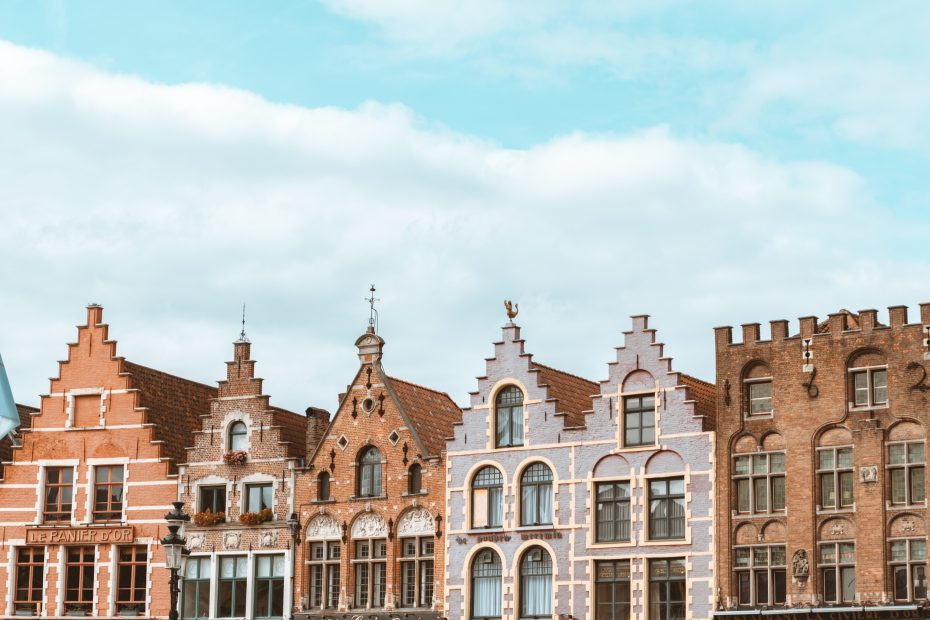Belgium has a rich artistic heritage spanning many centuries. From the soaring Gothic cathedrals of the Middle Ages to the bold experimentation of 20th century Surrealists, the country has gone through many key artistic periods that have left their mark on Belgian art and architecture. Let’s explore some of the highlights of Belgium’s “golden age” as well as its contemporary cultural landscape.
Table of Contents
Gothic Art and Architecture
During the 12th to 16th centuries, Belgium was part of a thriving Northwest European region that gave rise to the Gothic architectural style. Characterized by pointed arches, ribbed vaults, flying buttresses and an emphasis on light, Gothic architecture flourished in major Belgian cities.
The 13th century saw the construction of many Gothic cathedrals, including St. Michael and St. Gudula in Brussels and St. Bavo’s in Ghent. The Brabantine Gothic style, influenced by nearby Germany, emerged in Brussels with the prominent Church of Our Blessed Lady of the Sablon.
Notable Belgian Gothic artists of the 15th and 16th centuries included Rogier van der Weyden, renowned for his religious panel paintings and portraits, and Jan van Eyck, famous for mastering oil painting and for his innovative alterpiece, The Adoration of the Mystic Lamb.
Renaissance Art in Belgium
In the 16th and 17th centuries, the Renaissance made its way from Italy to Belgium, blending with the still-prominent Gothic tradition. While less intensely felt than in Italy, the Belgian Renaissance produced its share of distinguished artists and works.
Leading figures included Pieter Brueghel the Elder, pioneering genre scenes of peasant life, and Baroque artist Peter Paul Rubens, famous for his dynamic allegories, history paintings and portraits. While many Belgian artists traveled to Italy, bringing classical and humanist ideas back home, distinctly Flemish styles also developed in the work of artists like Anthony van Dyck.
Overall, the Belgian Renaissance was shaped by both Southern and Northern European influences, leading to an eclectic, varied artistic output.
Baroque Art and Architecture
During the 17th and 18th centuries, the Baroque style flourished across Belgium, encouraged by the Counter-Reformation and the prominence of the Church. It was characterized by increased extravagance and elaboration in architecture, sculpture and painting.
Famous Baroque buildings include Brussels’ Grand Place, dominated by opulent guildhalls, the Brussels Town Hall, and Liège’s Prince-Bishops’ Palace. Leading Baroque artists included Jacob Jordaens, renowned for his vivid religious paintings and tapestries.
The Baroque movement encouraged ornate decoration and complex allegories designed to captivate and teach religious messages. Though relatively brief in Belgium, it left a rich artistic legacy still visible across the country today.
Art Nouveau in Belgium
Around the turn of the 20th century, Belgium was the epicenter of the new Art Nouveau movement in design and architecture. Pioneering Belgian architects and designers sought to create a radically new, modern style that rejected historicism.
Brussels architect Victor Horta was one of the leading innovators of Art Nouveau, designing fluid, plant-inspired buildings like the Hotel Tassel and the Hôtel Solvay in Brussels. Other notable figures included designer Henry van de Velde and graphic artist Georges Lemmen.
Characterized by sinuous, elegant lines and natural forms, Belgian Art Nouveau creations ranged from glassware and posters to furniture and entire townhouses. The style expressed modernity and newfound freedom of expression.
20th Century Belgian Art
In the 20th century, Belgium played host to several major modern art movements. Surrealism emerged in the 1920s with Belgian artist Rene Magritte gaining global fame for his thought-provoking, dreamlike paintings questioning reality.
In the years after World War II, many Belgian artists embraced abstraction alongside newer contemporary trends like pop art and conceptual art. Notable postwar artists have included Abstract Expressionist Pierre Alechinsky and Pop Art pioneer Evelyne Axell.
Belgium continues to support contemporary art through institutions like the Royal Museums of Fine Arts of Belgium, showcasing the country’s ongoing role as an innovative artistic hub.
Conclusion
From soaring Gothic cathedrals to Hobbit Houses, Belgium enjoys a richly varied artistic tradition. Its heritage spans medieval altarpieces, Baroque embellishment, radical Art Nouveau designs, and Surrealist experimentation. Belgium has nurtured some of Europe’s most illustrious artists and innovators. Looking ahead, it will surely continue to contribute to global visual culture and push creative boundaries.
FAQ
FAQ 1: What makes Gothic architecture in Belgium unique?
The Gothic architecture of Belgium blended influences from France, Germany, and the Low Countries to create its own distinctive regional style. Signature elements included brick construction, towering spires, and elaborate sculptural programs on facades.
FAQ 2: How did Peter Paul Rubens impact art in Baroque Belgium?
Peter Paul Rubens was the preeminent Flemish Baroque painter. Known for his dynamic compositions and sensuous mythological paintings, he influenced an entire generation of Belgian and Dutch artists through his grand, flamboyant style.
FAQ 3: Where can Belgium’s Art Nouveau heritage be seen today?
Many Art Nouveau townhouses and civic buildings survive in Brussels, where major architects like Victor Horta pioneered the whiplash organic style. Brussels has several museums dedicated to the period.
FAQ 4: What made Belgian Surrealism distinct?
Belgian Surrealist artists like Rene Magritte created evocative, dreamlike works often tinged with irony and humor, setting them apart from the horror-inspired French Surrealists. trompe l’oeil and wit marked the Belgian school.
FAQ 5: Who are some key contemporary Belgian artists?
Prominent contemporary Belgian artists include conceptual artist Wim Delvoye, known for twisting everyday objects into absurdist sculptures, and multi-media creator Berlinde de Bruyckere, noted for her solemn wax figures.
